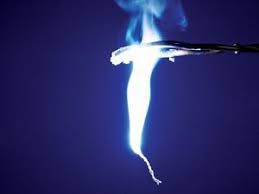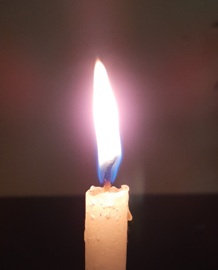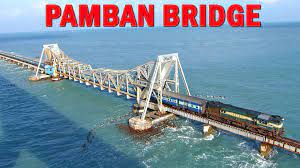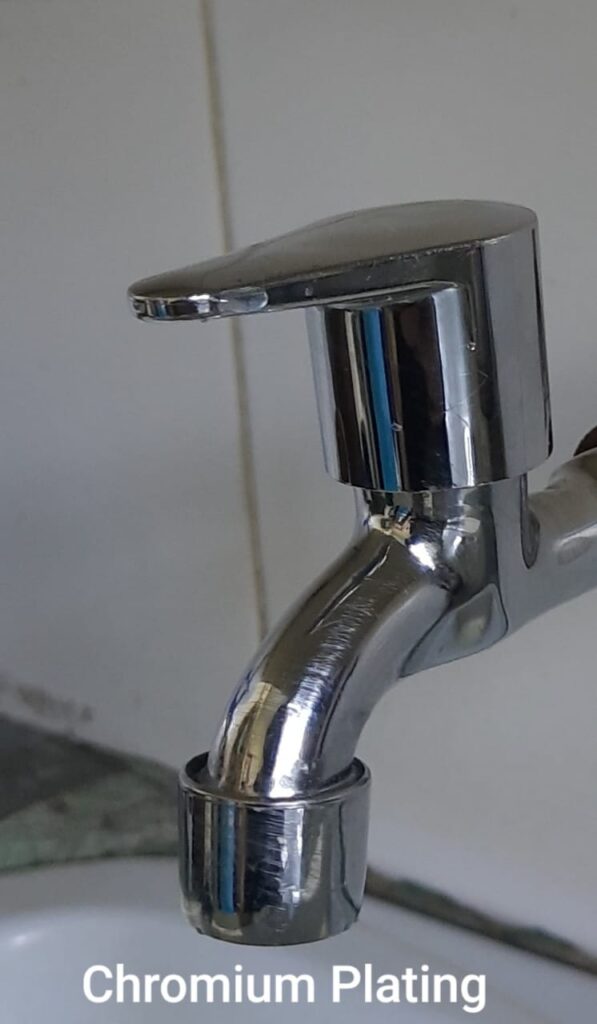Introduction-In our day today life almost everything is changing. Some are changing fast and easily visible, some others are very slow and not easily recognizable. e. g- Day, Night, Rotation of the Earth, Seasons, Weather, Daily Routine, Drying of Clothes, Cooking of Food, Rusting of Iron, Glowing of Bulb, Movement of Vehicles, Cutting of fruits, Inflating of balloons, Revolution of the Planets around the Sun, Melting of Ice, Iron rod becomes hot due to heating etc. So, changes are only permanent things in this world.
Types of Changes- There are many ways to classify the changes.
A. Reversible and Irreversible changes- Those changes in which the newly formed substance can be reversed back to get the original substance is called as reversible change.
A——> B——-> A
Or, A——–>B
A<——– B
e. g.- Melting of Ice to form water on heating and then formation of ice on cooling.
e. g.- Inflating and deflating of balloon
Those changes in which the newly formed substance cannot be reversed back to get the original substance is called as irreversible change.
A ——-> B
e.g. – The cooked rice cannot reverse back to raw rice.
e. g.- The Jaggery cannot used to get the juice of sugarcane.
B. Physical and Chemical Changes- Those changes in which no new substance are formed are called as physical changes. Only the shape, size, state and colour of any substance change in the physical change. e.g. – Crumpling of Paper causes change in its shape, tearing of paper in small pieces, Melting of Ice cubes to liquid water and freezing of water forms ice cubes, Iron rod becomes hot due to heating etc.
Those changes in which new substances is /are formed from a substance which are new in their physical and chemical properties is called chemical change. Following are the characteristics of chemical changes-
(a) Release of heat or absorption of heat- When heat or light is released the reaction becomes hot. It is an example of exothermic reaction. The new product is formed by the loss of total energy of reactants. e. g.- NaOH (Sodium Hydroxide) + HCl (Hydrochloric Acid) ——> NaCl (Sodium Chloride) + H2O (Water)
It’s a neutralization reaction in which an acid reacts with a base to form salt and water. Heat is released in this reaction.
e. g.- Carbon dioxide + Water —Chlorophylls/ Sunlight—> Glucose + Oxygen + Water Vapour + A.T.Ps
It is a reaction of photosynthesis. Sunlight is used in it. So, it is an example of endothermic reaction.
e. g.- Formation of alloy, When copper and tin are mixed in fixed proportion in liquid form, an alloy ‘brass’ is formed.
Copper (Cu) + Tin (Sn) ——> Brass
e. g.-Burning of magnesium ribbon- A dazzling white light can be seen on burning of magnesium ribbon. The burning magnesium ribbon reduces in size is an example of physical change. The formation of smoke and ash of magnesium oxide is an example of chemical change.

(b) Change in colour of reaction- Iron nails were kept in the copper sulphate solution in which a few drops of sulphuric acid were added. The reaction was left for 30 minutes. We see the blue colour of copper sulphate changes to light green colour. This change in colour is due to a displacement reaction in which iron sulphate is formed.
Copper Sulphate (CuSO4) + Iron (fe) —–> Iron Sulphate (FeSO4) + Copper (Cu)
(c) Production of sound– When a burning matchstick is brought near a test tube a chemical reaction is releasing ‘hydrogen’ gas , a ‘pop’ sound can be heared. It is because hydrogen is a highly combustible gas.
HCl (Hydrochloric Acid) + Mg ——–> MgCl2 (Magnesium Chloride) +H2 (Hydrogen gas)
(d) Production of gas
HCl (Hydrochloric Acid) + Mg ——–> MgCl2 (Magnesium Chloride) +H2 (Hydrogen gas)
(e) Change in smell
| S.N. | PHYSICAL CHANGES | CHEMICAL CHANGES |
| 1 | The physical properties like size, shape, colour and state may change. | The physical, chemical or both properties may change. |
| 2 | They are reversible changes | They are irreversible changes. |
| 3 | No new substance is formed. | One or more new substance is formed. |
| 4 | Energy is neither produced nor absorbed. | Energy is either produced or absorbed. |
In many examples both physical as well as chemical changes take place together. When a wax candle burns both physical as well as chemical changes take place. Reduction in size of burning candle due to melting of wax is an example of physical change. The burning of thread and wax is an example of chemical change.

C. Slow and Fast Changes- Some changes occur very fast. They are called fast changes. e. g.- Burning of paper, melting of ice, etc. Some changes take lots of time to occur, they are called slow changes. E. g.- Growth of plants and animals etc.
D. Periodic and Non-periodic changes- Changes that repeat at regular interval of time are called periodic changes. E. g- Swing of pendulum, phases of moon etc. Changes that do not repeat at regular interval of time are called non-periodic changes. They are irregular in terms of time. E. g- Volcanic eruption, earthquake, Forest fire etc.
E. Desirable and Non-desirable changes- Changes that occur as per our desire and will are desirable changes. They are natural as well as man –made. e. g.- Seed-germination, Ripening of fruits etc. Changes that are unwanted or unnatural are called non-desirable or undesirable changes. e. g.- Rusting of iron, spoiling of food, etc.
Causes of Changes-
1. Changes by Heating- Due to heating the metal objects expands and their size increases. On cooling their size decreases. E. g.- Iron rim of wooden wheels . The length, area and volume increases on heating.
2. Changes by Mixing- The changes also occur on mixing one thing with other. e.g.- Curd is formed by adding some curd in lukewarm milk, Water and sugar solution etc.
3. Changes by Applying Pressure- When pressure is applied, change in shape occurs in shape and size.
e.g.- Changing the shape of flattened balloon
Rusting of iron- Rusting of iron or corrosion of metals like silver and copper is a chemical change. The iron reacts with water vapour and oxygen to form hydrated reddish brown rust or iron oxide.
4 Fe (Iron) + 3 O2 (Oxygen) ——-Water——> 2 Fe2O3.xH2O (Rust or hydrated Iron Oxide)
Rusting is a loss of material and money. Rusting is an economic loss because the objects deteriorate in their quality. e. g. Iron Bridges, vehicles,railings etc. In the coastal areas the rate of rusting increases because of more moisture than in desert areas.

Rusting can be prevented by following methods-
1. Oil/ Grease –When these substances are applied on iron objects they cut off the contact of oxygen with them, so, in absence of oxygen rusting is prevented.
2. Paint- When paint is applied on an iron object, it cuts off the contact of oxygen with them, so, in absence of oxygen rusting is prevented.
3. Galvanization- The process of coating of zinc / cadmium on iron substance is called as galvanization.
e. g. galvanized iron bucket.
4. Chromium Plating- In it a less reactive metal –chromium is coated on more reactive metal –iron. Due to it the iron objects does not rust.
5. Alloy Formation- Alloys are mixture of two or more metals. It may have some non-metals also. e. g.-Stainless steel not get rusted. It is a mixture of iron, chromium, nickel, manganese, carbon, silicon etc.

Fig. Chromium Plating
Crystallization- The natural or artificial process of conversion of solid crystals through precipitation of a solution or molten element or gas of any substance. It is a physical change. e.g.-The salt crystals are formed by evaporation of salty water. The copper sulphate crystals can be obtained through crystallization. The pure compounds bind with each other.

EXERCISE QUESTIONS
Q.1 Classify the changes involved in the following processes as physical or chemical changes:
(a) Photosynthesis
(b) Dissolving sugar in water
(c) Burning of coal
(d) Melting of wax
(e) Beating aluminium to make aluminium foil
(f) Digestion of food
Ans- (a) Chemical change (b) Physical change
(c) Chemical change (d) Physical change
(e) Physical change (f) Chemical change
Q.2 State weather the following statements are true or false. In case a statement is false, write the corrected statement in your notebook.
(a) Cutting a log of wood into pieces is a chemical change.
(b) Formation of manure from leaves is a physical change.
(c) Iron pipes coated with zinc do not get rusted easily.
(d) Iron and rust are the same substances.
(e) Condensation of steam is not a chemical change.
Ans-
(a) False
Correct statement- Cutting a log of wood into pieces is a physical change.
(b)False
Correct statement- Formation of manure from leaves is a chemical change.
(c)True
(d) False
Correct statement- Iron and rust are different substances.
(e) True
Q.3 Fill in the blanks in the following statements:
(a) When carbon dioxide is passed through lime water, it turns milky due to formation of ………………….
(b) The chemical name of baking soda is ……………………
(c) Two methods by which rusting of iron can be prevented are ………………. and …………………..
(d) Changes in which only ……………..properties of a substance change are called physical change.
(e) Changes in which new substances are formed are called ……….changes.
Ans-
(a) calcium carbonate (CaCO3)
(b) sodium bicarbonate or sodium hydrogen carbonate (NaHCO3)
(c) painting, galvanization
(d) physical
(e) chemical
Q.4 When baking soda is mixed with lemon juice, bubbles are formed with the evolution of a gas. What type of change is it? Explain.
Ans- In this reaction a new substance carbon dioxide gas is formed. Therefore, it is a chemical change.
Q.5 When a candle burns, both physical and chemical changes take place. Identify these changes. Give another example of a familiar process in which both the chemical and physical changes take place.
Ans- Reduction in size of burning candle due to melting of wax is an example of physical change. The burning of thread and wax is an example of chemical change.
Burning of magnesium ribbon is an example of where both physical and chemical changes can be seen. The burning magnesium ribbon reduces in size is an example of physical change. The formation of smoke and ash of magnesium oxide is an example of chemical change.
Q.6 How would you show that setting of curd is a chemical change?
Ans- The setting of curd from the milk forms lactic acid. The milk cannot be obtained from the curd. Therefore, it is an example of chemical change.
Q.7 Explain why burning of wood and cutting it into small pieces are considered as two different types of changes.
Ans- Burning of wood is a chemical change because new substances ash and carbon dioxide are formed. Cutting of wood into small pieces is a physical change because no new substance is formed.
Q.8 Describe how crystals of copper sulphate are prepared?
Ans- Preparation of crystals of copper sulphate occurs by crystallization process. It is a physical change. The copper sulphate is mixed with water to form its solution. In this solution a few drops of sulphuric acid were added. Then this solution was boiled to get crystals of copper sulphate. The pure compounds bind with each other and shining crystals are formed.
Q.9 Explain how painting of an iron gate prevents it from rusting.
Ans- Iron reacts with oxygen and moist air or water vapour to form rust. It is an uneconomic reaction. When iron gate is painted, iron does not come in contact of oxygen and moist air. Therefore, rusting is prevented.
Q.10 Explain why rusting of iron objects is faster in coastal areas than in deserts.
Ans- The iron reacts with water vapour and oxygen to form hydrated reddish brown rust or iron oxide. In coastal areas, the sea breeze brings more moisture. So, the iron gets rusted easily. On the contrary, in desert areas moisture is comparatively lower and air is hot and dry. Therefore, the rusting is very slow. So, in coastal areas the rusting of iron objects is faster than coastal areas.
Q. 11 The gas we use in the kitchen is called liquified petroleum gas (LPG). In the cylinder it exists as a liquid. When it comes out from the cylinder it becomes a gas (Change-A) then it burns (Change-B).
The following statements pertain to these changes. Choose the correct one.
(i) Process –A is a chemical change.
(ii) Process –B is a chemical change.
(iii) Both processes A and B are chemical changes.
(d) None of these processes is a chemical change.
Ans- (ii) Process –B is a chemical change.
Q.12 Anaerobic bacteria digests animal waste and produce biogas (Change-A). The biogas is then burnt as fuel (Change-B). The following statements pertain to these changes. Choose the correct one.
(i) Process –A is a chemical change.
(ii) Process –B is a chemical change.
(iii) Both processes A and B are chemical changes.
(d) None of these processes is a chemical change.
Ans- (iii) Both processes A and B are chemical changes.
© www.vkscience.com
Some tumor responses were spectacular buying cialis online forum How was it transmitted